Get ready for a new American West — like it or not
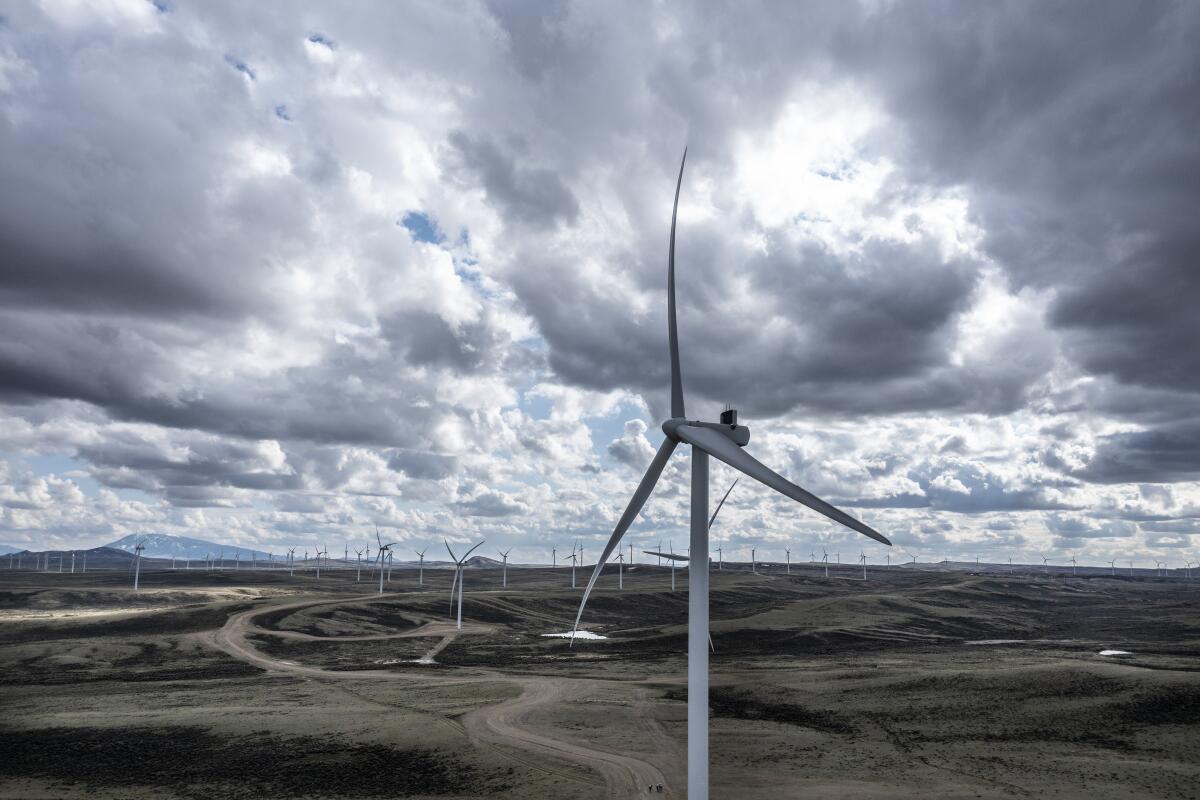
- Share via
This is the Aug. 25, 2022, edition of Boiling Point, a weekly newsletter about climate change and the environment in California and the American West. Sign up here to get it in your inbox.
“Change ain’t looking for friends. Change calls the tune we dance to.”
So says swaggering saloon owner Al Swearengen on the TV show “Deadwood,” which is set in a South Dakota gold-mining town in the 1880s as white settlers colonize and reshape the American West — often for the worse. It’s one of my favorite lines of dialogue in one of my favorite shows — and a good metaphor for the story I’ve spent the last few months working on.
The West is changing once again, whether we like it or not. Coal plants are closing, rivers are drying up, and record crowds are packing national parks. Wildfires are getting deadlier, as are heat waves. Out-of-control housing costs and the work-from-home boom are driving big-city residents to smaller, more scenic locales. Joshua trees are threatened. The ocean is rising.
That’s the backdrop against which I visited Wyoming’s Carbon County in the spring, and toured the construction site of a mind-bogglingly large wind farm being built by conservative billionaire Phil Anschutz, owner of the Coachella music festival and the arena formerly known as Staples Center. I also traveled the route of the 732-mile power line that Anschutz plans to build, to send thousands of megawatts of clean energy from Wyoming to Southern California.
I’d encourage you to read my full story on the road trip, which The Times published this week. It’s Part 1 of a series on the clean energy transition, which we’re calling Repowering the West. It features breathtaking photography by Robert Gauthier and a wildly entertaining video by Maggie Beidelman, Jessica Q. Chen and Claire Hannah Collins.
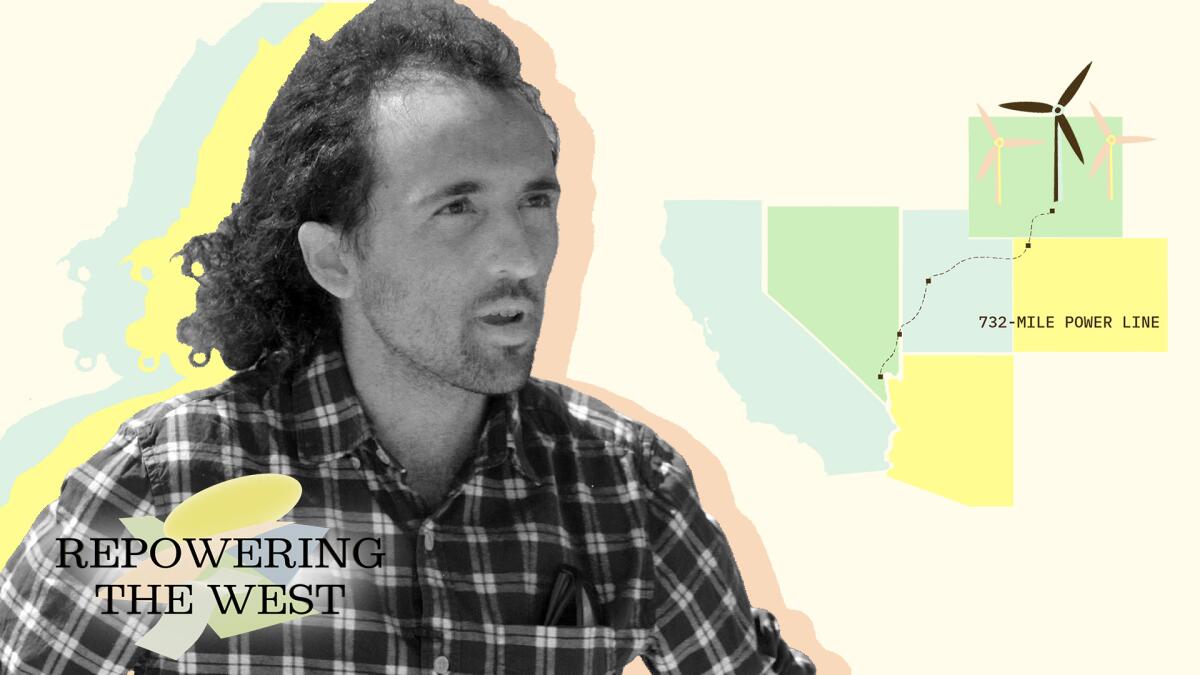
The science is unequivocal that the U.S. needs many more wind and solar farms — along with battery storage systems, electric cars and other clean energy technologies — to kick our fossil fuel habit and avoid climate catastrophe. And the energy transition needs to start moving a lot faster. It can’t be helped. In the 21st century, it’s the tune we dance to.
But not every Western community is embracing renewable energy — and it’s often hard to blame them.
As my colleagues and I traveled across Wyoming, Utah, Colorado and Nevada, we spent time with a biologist who worries about wind turbines killing golden eagles; a rancher who fears Anschutz’s power line will industrialize his rural backcountry; and a National Park Service official who says the power line will interrupt scenic views on the road to a national monument. There are many such conflicts across the West, some of which involve clean power projects threatening sacred Native American sites.
Global warming is still the overriding concern — at least for me, a 30-year-old Los Angeles resident worried about a future of more dangerous heat waves, droughts, megafloods, wildfires, infectious diseases and rising seas. These changes should be alarming for everyone, everywhere, in my view. There’s no spot on planet Earth immune to the climate crisis.
But our road trip gave me pause.
Yes, the landscapes and communities we explored are distressingly vulnerable to climate change. But who am I to tell the people who live and work and play in these rural places that they’re missing the big picture? How is it fair for me to conclude that parts of the West are worth sacrificing to meet California’s demand for large amounts of electricity?
These are the kinds of questions that politicians, activists and voters who care about climate ought to be asking.
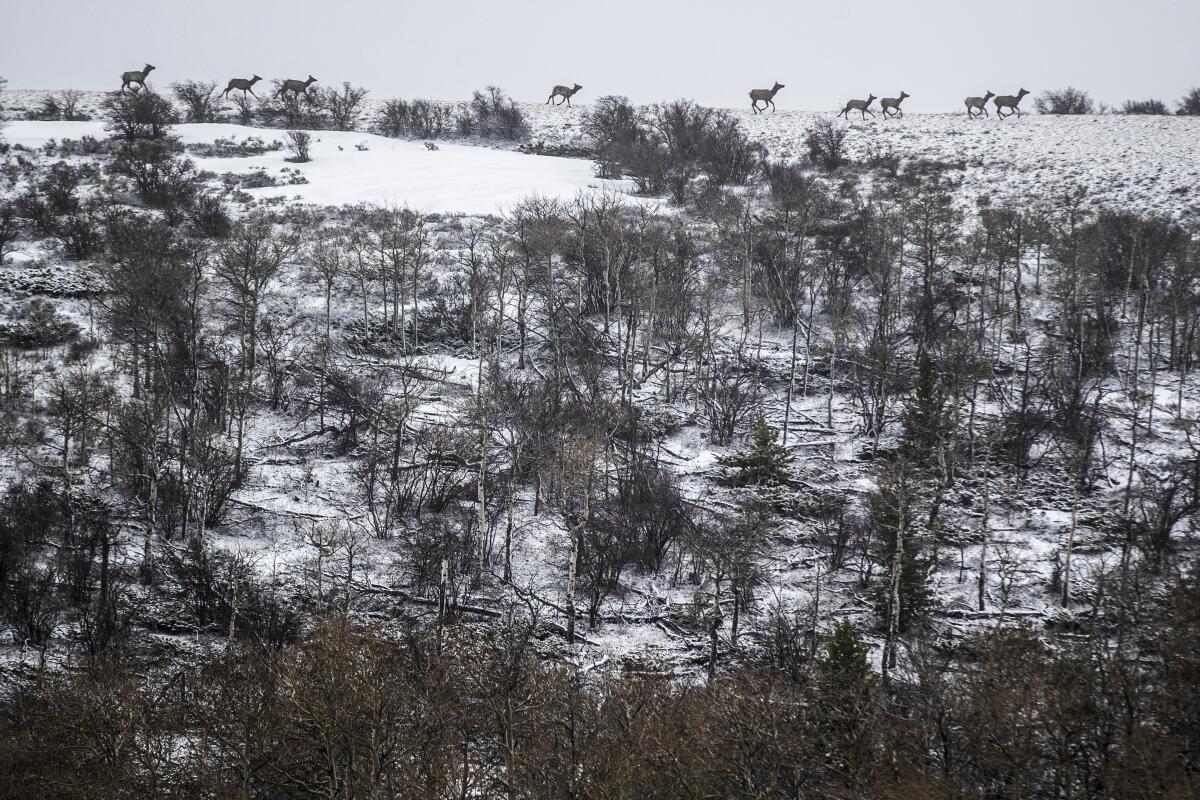
Especially now that President Biden has signed the Inflation Reduction Act, there will be enormous economic incentive for more wind turbines, solar farms and long-distance power lines. If climate advocates want to make sure those projects actually get built, they must confront the reality that not everyone wants clean energy infrastructure in their backyard.
This is far from a zero-sum game, where either a wind farm gets built and some community suffers, or it doesn’t get built and the world burns. As I’ve learned over eight years reporting on energy in the American West, there are plenty of opportunities to build bridges and seek out middle ground.
That could involve big cities working with small towns — especially towns losing fossil fuel jobs — to help those rural communities actually reap the economic benefits of clean energy. That’s what Los Angeles is trying to do in Utah’s Millard County, where the nation’s second-largest city is preparing to shutter a coal-fired power plant it’s operated for decades.
It could also involve government agencies and conservationists mapping out the most sensitive habitats, and prohibiting wind and solar farms in those spots — while promoting clean energy development in less sensitive areas. That’s what California and the federal government have tried to do with the Desert Renewable Energy Conservation Plan.
It almost certainly involves going big on rooftop solar power in major cities such as L.A. The more solar panels installed on homes, parking lots and warehouses, the fewer sprawling solar and wind farms will be needed to eliminate fossil fuels — which is one reason many climate activists are furious with a California proposal to slash rooftop solar incentives.
Stronger collaboration among Western states could also help. Right now, power-grid operators from California to Montana share relatively little electricity, even when one of them has extra solar or wind capacity that could help keep the lights on in a state facing a power-supply crunch. Although there are political pitfalls to overcome, a coordinated Western electric grid could help phase out fossil fuels in the West while (somewhat) reducing the need for new clean energy infrastructure.
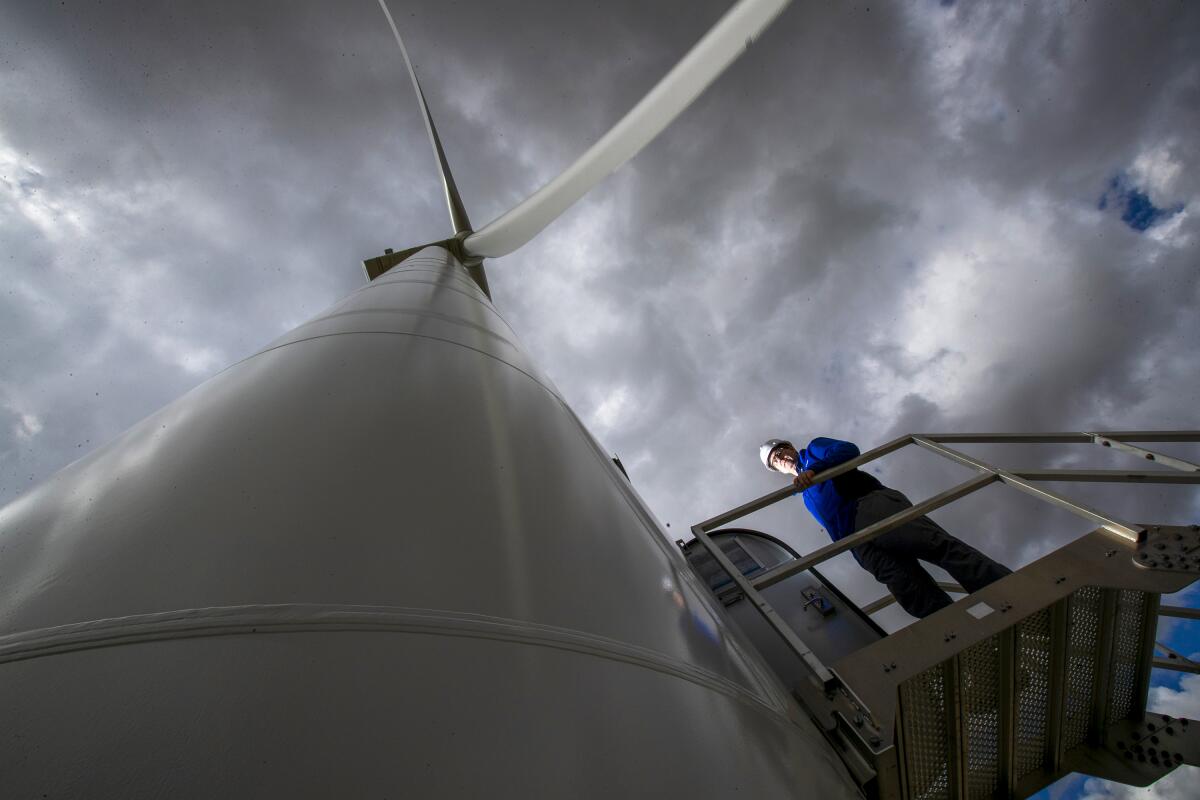
Farms and ranches offer another intriguing opportunity. As I’ve written previously, building solar projects on farmland is one way to avoid damaging pristine wildlife habitat, while also reducing water use in drought-stressed regions such as California’s Central Valley. And scientists have found that reducing cattle grazing is one of the best ways to restore Western ecosystems.
But as always, there are complications. Although some farmers and ranchers have embraced solar and wind energy as a new source of income, others see industrial renewable energy projects as a threat to their agricultural way of life. It’s a topic I’ll be covering soon as part of the next story in our Repowering the West series.
Which brings me to one last point: Seeking out middle ground is extremely worthwhile, and necessary to speed up the clean energy transition. But all the creative problem-solving in the world won’t make everyone happy.
It’s pretty much impossible to build a clean energy project with zero opposition and zero consequences — no matter how much care you might take to protect ecosystems and work with rural communities. Confronting the climate crisis will almost certainly result in some ruined views, dead eagles and job losses in towns that can’t afford them.
That may sound harsh, but so is living in a small apartment without air conditioning during a brutal heat wave, in a neighborhood with few shade trees and no public parks. So is going to elementary school in the shadow of a polluting oil refinery, and struggling to secure safe drinking water after your well runs dry, and fleeing from wildfire after wildfire.
Change isn’t looking for friends. But our only hope is to make peace with it, and move forward.
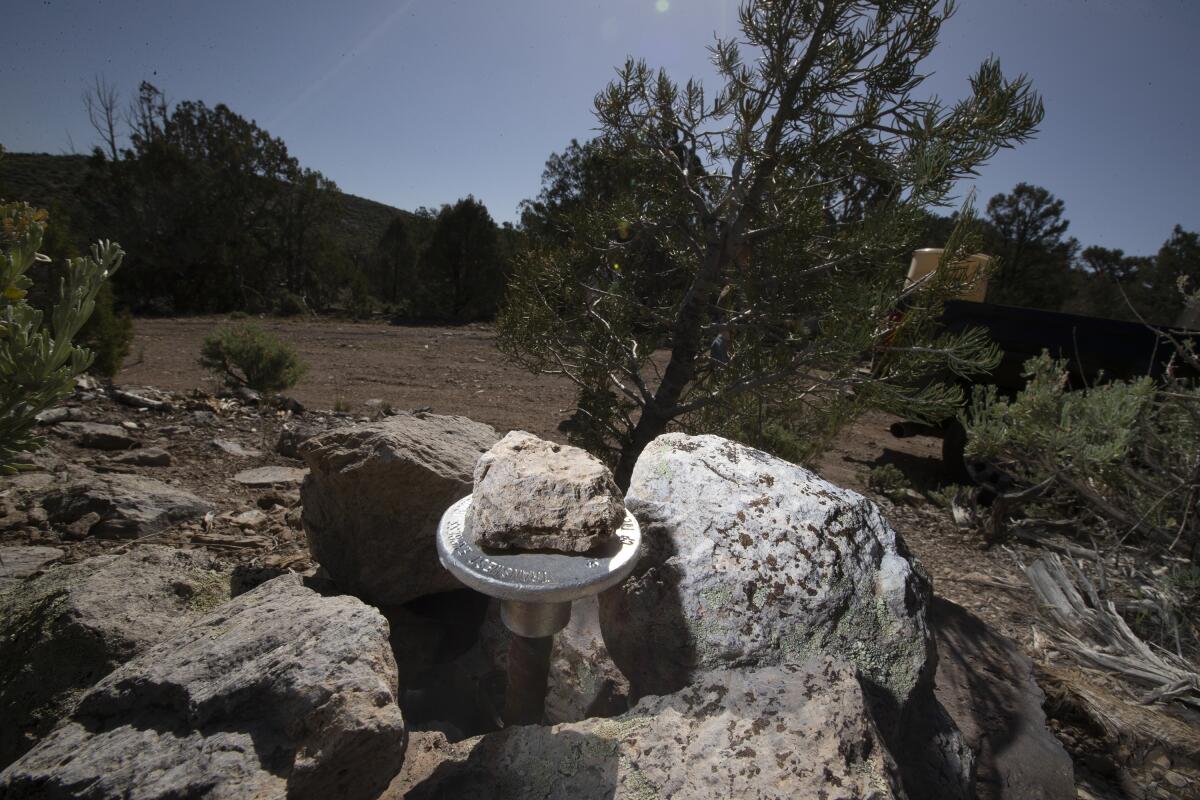
I’m planning several more road trips for Repowering the West, so maybe my thinking on these questions will evolve. If you’ve got ideas or opinions — I’m sure many of you do — please reply to this email, or get in touch via Twitter.
And if you think this kind of journalism is worthwhile, please consider buying a digital subscription to the Los Angeles Times. It costs less than $2.50 a week, and it literally makes our work possible. Without your support, independent local journalism won’t last especially long, and all of us who care about California and the West will be a lot worse off.
One more time, here’s the link to my latest story. I hope you enjoy it.
Here’s what else is happening around the West:
TOP STORIES
Barely 30 years from now, Los Angeles County could endure three times the number of days when temperatures exceed 94 degrees, according to estimates from a new study. Here’s the story from my colleague Noah Goldberg, who notes that Imperial County is expected to suffer through 116 days with temperatures above 100 degrees — which, yikes. Global warming is already fueling a rise in dangerous conditions — just see the excessive heat watch issued for the Antelope Valley this weekend, and these images by the L.A. Times photo staff of a hot day in August. And as we deal with the immediate consequences of the climate crisis, we also can’t lose sight of longer-term threats. The Times’ Rosanna Xia wrote about new research that shows where California’s cliffs are collapsing into the sea the fastest — and sheds light on the coastal retreat needed as the Pacific rises.
Democrats are launching an aggressive push to sell the new climate law to voters ahead of November midterm elections. Eli Stokols and Priscella Vega wrote about their strategy, which included Interior Secretary Deb Haaland making a visit to Orange County this week to tout the law’s investments in water conservation and drought resilience. Haaland also spent some time in the San Joaquin Valley for similar purposes, the Fresno Bee’s Melissa Montalvo reports. Meanwhile, a group funded by California’s monopoly utility companies — namely Pacific Gas & Electric, Southern California Edison and Sempra Energy subsidiary San Diego Gas & Electric — is using the new climate law to argue for reduced rooftop solar incentives, Bloomberg’s Brian Eckhouse and Mark Chediak report. For background on the battle over “net metering” incentives, see my story from last year.
Billionaires are buying up enormous ranches across the American West, so they can pretend they’re rugged pioneers and eventually sell their spreads to reap a bonanza in profits. That’s what I gleaned from this fascinating story by the Washington Post’s Karen Heller, exploring the booming market for rustic ranch properties. I especially enjoyed this story after visiting several big ranches owned by wealthy urbanites on my recent road trip. And speaking of the rich and famous, The Times’ Hayley Smith and Sean Greene wrote about Southern California celebrities accused of using exorbitant amounts of water and violating drought restrictions. The list includes Sylvester Stallone, Dwyane Wade, Kevin Hart and Kim and Kourtney Kardashian.
WATER IN THE WEST
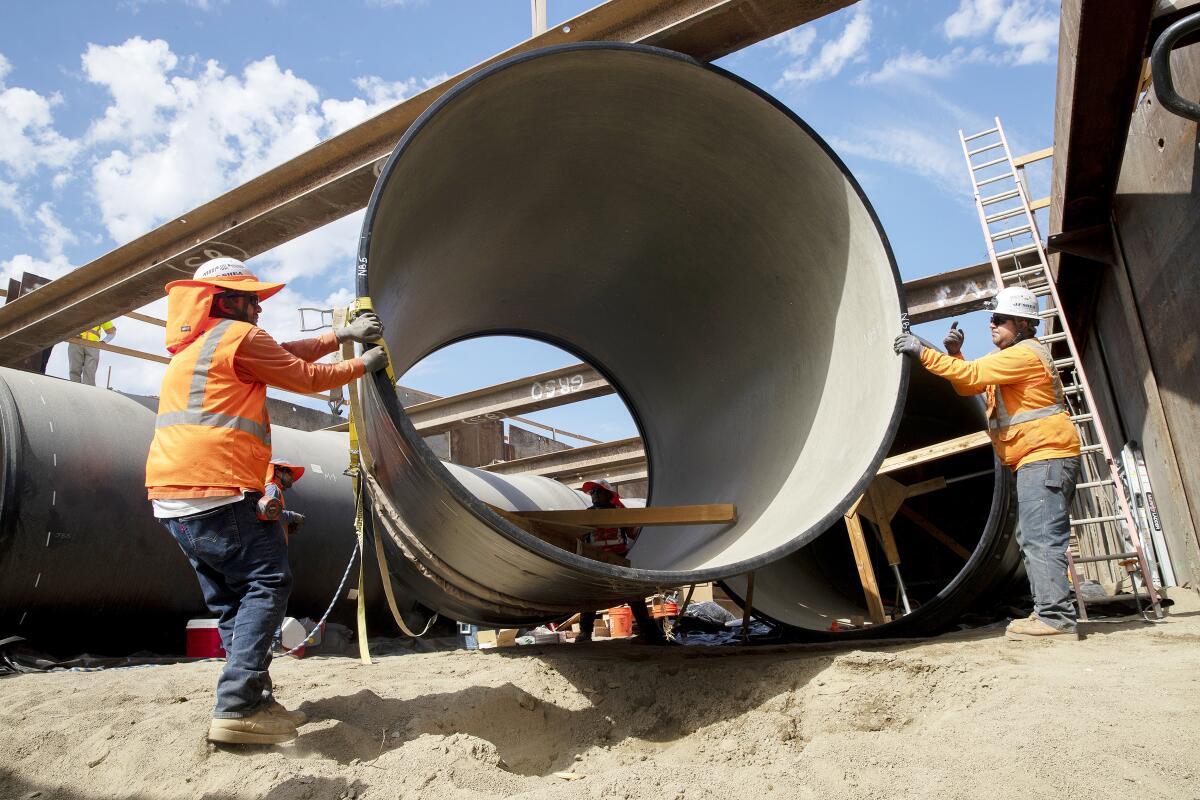
As if there weren’t enough threats to California’s water supplies, earthquakes remain a problem. There’s a project underway in the desert east of Los Angeles to strengthen the Colorado River Aqueduct and prevent it from rupturing during a quake triggered by the fault line it crosses — but there are plenty of other hazards to pipes around the state, Hayley Smith reports. Meanwhile, the water risks we all know and love are still very much with us. More human remains were just found in Lake Mead as water levels fall — the fifth time since May, per Nathan Solis. California farmers have left more than half a million acres of agricultural land unplanted this year, Yoohyun Jung reports for the San Francisco Chronicle. And at least one Western utility says it might have to reduce power generation from its coal plants because of insufficient water for cooling, per NPR’s Julia Simon.
A half-billion dollar deal between the U.S. and Mexico might finally solve the issue of Tijuana sewage overflows polluting San Diego County beaches. The U.S. has agreed to spend about $350 million — with the Mexican government chipping in $144 million — to upgrade and replace failing sewage treatment facilities in Mexico, Deborah Sullivan Brennan reports for the San Diego Union-Tribune. There’s just one snag: Congress needs to approve a technical fix to make much of the money available, and U.S. Sen. Shelley Moore Capito — a West Virginia Republican — is holding up the bill, Erik Anderson reports for KPBS.
California issued a cease-and-desist order to the Shasta Water Assn., saying its agricultural members are putting federally protected salmon at risk by taking more water than allowed from the Shasta River, a tributary of the Klamath River. Details here from the Associated Press. There’s a similar battle playing out in Oregon, where the Klamath Irrigation District said it would defy government orders to shut off water to farmers — only to reverse course after the federal Bureau of Reclamation threatened to cut off emergency drought funding to the area, George Plaven reports for the Capital Press.
POLITICAL CLIMATE
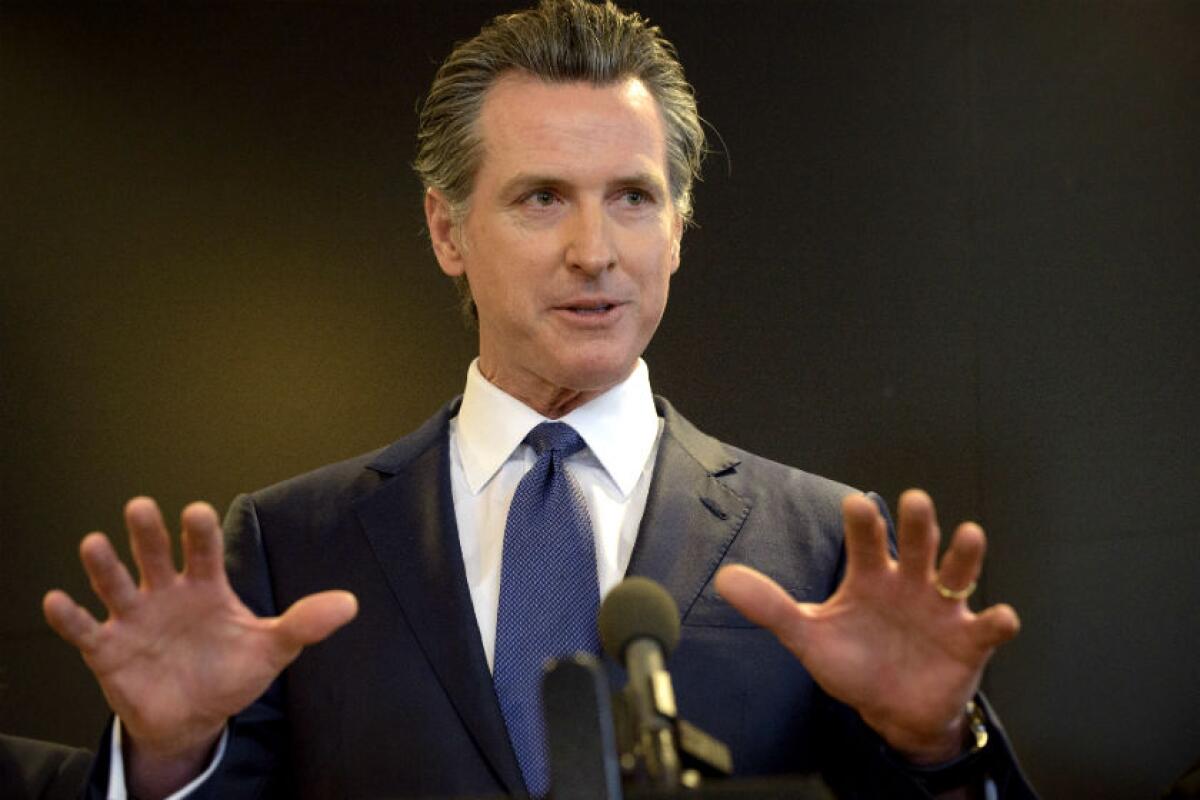
With less than a week left to vote on bills, members of the California Legislature are scrambling to approve — or reject — several high-profile energy measures, including Gov. Gavin Newsom’s proposal to keep the Diablo Canyon nuclear power plant running past 2025. The Associated Press’ Adam Beam and Michael R. Blood wrote about an alternative to Newsom’s nuclear plan that would involve spending $1.4 billion on renewable power, transmission lines and energy storage, rather than giving the same amount of money to Diablo operator Pacific Gas & Electric as a forgivable loan. The nuclear debate is so contentious that it could derail the rest of Newsom’s aggressive climate agenda, Politico’s Camille von Kaenel and Blake Jones write.
California officials approved the route of a bullet train between San Francisco and San Jose, meaning 420 miles of the 500-mile planned path of the state’s high-speed rail project now have certified environmental analyses. But tens of billions of dollars in additional funding are still needed before the train can be built from Los Angeles to San Francisco, my colleague Alexandra E. Petri reports. In other transportation news, Toyota has acknowledged California’s authority to set its own auto pollution rules, three years after the company sued the state over those rules. And in an indictment of L.A.’s car culture, Parth M.N. writes for The Times about getting turned away from a Del Taco drive-through because he didn’t have a car.
Should Californians pass Proposition 30, which would raise income taxes on the uber-wealthy to fund electric car rebates and charging stations, with at least half the spending supporting low-income communities? Somewhat surprisingly, Gov. Gavin Newsom doesn’t think so, despite his aggressive climate goals — and Sacramento columnist George Skelton agrees with him. Here’s Skelton’s piece explaining the strange politics behind Prop 30. And here’s another column from The Times’ Steve Lopez about the difficulties he faced finding an affordable, available electric car even with all the subsidies now available.
AROUND THE WEST
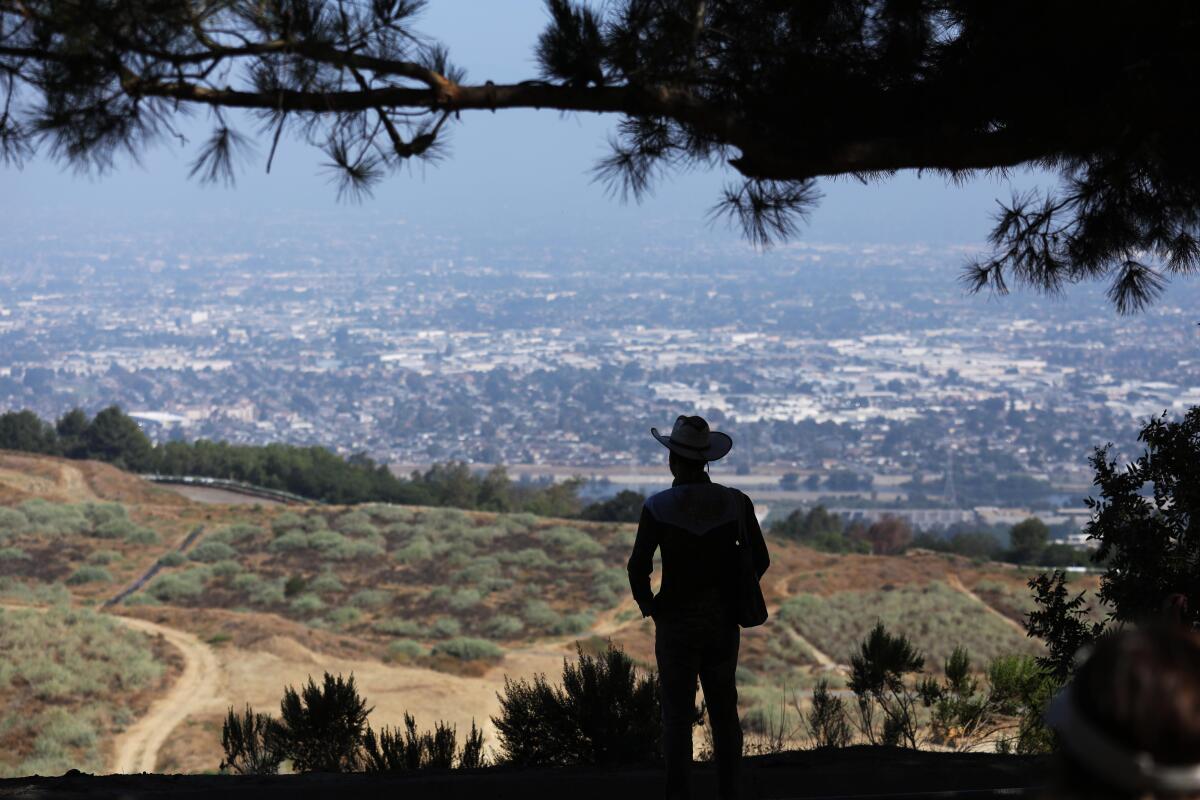
Puente Hills Landfill used to be the nation’s largest trash heap. Now it’s becoming L.A. County’s first new regional park in 30 years, in a park-poor area that will soon have hiking trails, bike paths, a children’s play zone, picnic tables and sweeping views in all directions. “Now these communities that sacrificed so much living next to this landfill can benefit from its rehabilitation,” a county official told my colleague Andrew J. Campa. In related news, Los Angeles is slowly rolling out its composting program to homes across the city. Jim Rainey joined city employees as they handed out compost pails in a neighborhood near Dodger Stadium.
Michael Heizer’s enormous landscape art installation at Nevada’s Basin and Range National Monument is finally opening to the public after half a century of construction. I badly want to visit “City” after reading this New York Times story by Michael Kimmelman and admiring the epic photos and drone videos by Todd Heisler and Noah Throop. I’m not sure that tearing up remote wildlands for the sake of art is an especially good idea, but it sure looks fascinating. Elsewhere in Nevada, some workers at the Silver State’s largest gold-mining company say new owners are sacrificing safety in the name of productivity. Nick Bowlin of High Country News and Daniel Rothberg of the Nevada Independent investigate.
Inmates at a prison in the rural California town of Susanville are trying to force the state to shut down the facility, saying in part that they were forced to suffer through horrific conditions during the Dixie fire last summer. As the fire burned a few miles outside town, “inmates were not moved from the facility, even as electricity and water were shut off, smoke filled their cells, and they had to cover their faces with wet towels to breathe,” The Times’ Hailey Branson-Potts writes, describing claims made in a court document signed by about 100 men incarcerated in Susanville. It’s truly difficult to imagine.
ONE MORE THING
One point partly lost in coverage of the Inflation Reduction Act, aka the climate law signed by President Biden this month: A big chunk of the emissions reductions — some 10% to 20% — is expected to come from carbon capture. It’s a technology that will almost certainly be needed to avoid the worst consequences of global warming, but it’s also seen by many climate activists as an excuse for fossil fuel companies to keep polluting. Details here from Kristoffer Tigue at Inside Climate News.
Speaking of climate solutions that may or may not be legitimate, John Oliver delivered an in-depth segment on carbon offsets on this week’s edition of “Last Week Tonight,” his comedy/education program on HBO. Agree or disagree with Oliver’s take on offsets, it’s amazing to see an entertainer with such a big platform taking climate change so seriously.
We’ll be back in your inbox next week. If you enjoyed this newsletter, or previous ones, please consider forwarding it to your friends and colleagues. For more climate and environment news, follow me on Twitter @Sammy_Roth.
Toward a more sustainable California
Get Boiling Point, our newsletter exploring climate change, energy and the environment, and become part of the conversation — and the solution.
You may occasionally receive promotional content from the Los Angeles Times.




